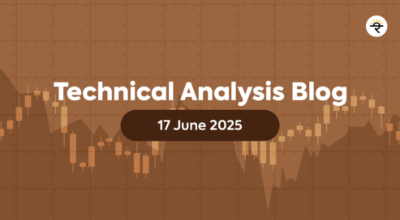Chart patterns are essential tools in the arsenal of any technical trader. Among the most powerful continuation patterns is the Flag and Pole formation, which signals the potential for a strong move in the direction of the existing trend. Recognizing this pattern in real-time can help you capture quick gains during trending markets.

The Flag and Pole is a bullish or bearish continuation pattern. It starts with a sharp price move called the pole, followed by a brief consolidation phase that slopes against the prevailing trend (the flag). When the price breaks out of the flag, the trend often resumes with renewed strength.
Anatomy of the Flag and Pole Pattern
Pole Formation: The pole represents a steep and rapid price movement, either upward (bullish flag) or downward (bearish flag). This move is often driven by high volume, strong momentum, or a significant news event.
Flag Formation: After the initial surge, price enters a consolidation phase that resembles a parallelogram or a small channel sloping against the trend. This flag usually forms on lower volume and reflects a temporary pause or profit booking.
Breakout: The pattern is confirmed when the price breaks out of the flag in the direction of the pole (i.e., upward in a bullish flag or downward in a bearish flag). Ideally, this breakout should be accompanied by a volume spike to confirm renewed interest from buyers or sellers.
How to Trade the Flag and Pole Pattern
Entry Point
· Enter the trade when the price breaks out of the flag channel in the direction of the pole on strong volume.
· A bullish flag breakout occurs when the price closes above the flag’s upper boundary.
· A bearish flag breakout occurs when the price closes below the flag’s lower boundary.
· Conservative traders may wait for a confirmation candle to reduce the risk of false breakouts. Alternatively, you can scale in: 50% on breakout and 50% after confirmation.
Target Price
There are two common methods to estimate the price target:
Pole Projection Method:
· Measure the height of the pole.
· Add (for bullish) or subtract (for bearish) this value from the breakout point.
· Target = Breakout Point ± Pole Height
Fibonacci Extension Levels:
Fibonacci extensions and/or pivot levels can help identify logical resistance/support zones for profit-taking.
Stop-Loss Placement
· Place your stop-loss just below the lower boundary of the flag for a bullish flag, or just above the upper boundary for a bearish flag.
· Alternatively, for tighter risk, use the low/high of the breakout candle as your stop-loss.
· Ensure there’s enough room for price fluctuations to avoid premature stop-outs due to minor noise.
Additional Tips
· Volume Surge during the pole formation and at breakout is key. Lack of volume during the flag formation is normal.
· Flags typically last from a few days to a few weeks, depending on the time frame and market context.
· The steeper and cleaner the pole, the more reliable the pattern.
· Combine with indicators like RSI, MACD, or moving averages to validate breakout strength.
· Works well during strong trending phases, especially after earnings, sectoral rallies, or macro news.
Charting Exercise: Pull up a daily chart and identify the following:
· The Pole (steep price move)
· The Flag (consolidation channel)
· Breakout point
· Estimate your Entry, Stop-loss, and Target
Use your charting tools to draw the parallel flag channel and project the pole height from the breakout. Watch closely for volume confirmation during the breakout candle.
Homework
Analyze the following stocks to spot any emerging or completed Flag and Pole patterns:
1. Godrej Industries Ltd. (GODREJIND)
2. Usha Martin Ltd. (USHAMART)
Study the price action, draw the pattern, and see if the breakout is supported by volume.
You may also add the stock to your watch list to understand further price action.
Disclaimer: This analysis is purely for educational purpose and does not contain any recommendation. Please consult your financial advisor before taking any financial decision.




